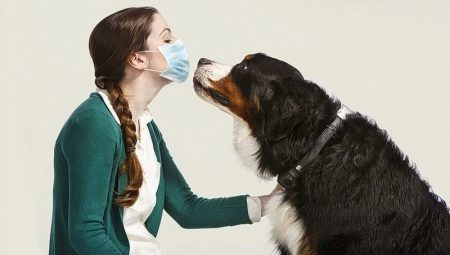Dogs are associated with a variety of things: fidelity and aggression, guard and care about walking, friendly sympathies and anxiety. But perhaps the most common concern of potential owners is the risk of allergies. Fortunately, there are varieties of tetrapods that are less likely than others to provoke this dangerous condition.
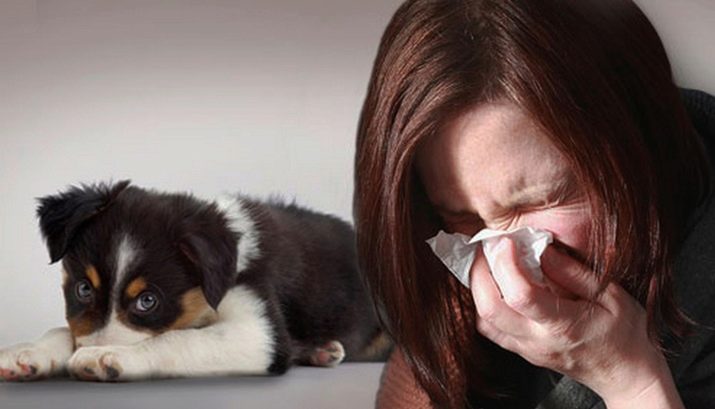
Features
Strictly speaking, there are no absolutely allergenic animals. A perverted, abnormal reaction in the human body can occur on absolutely any substance, even one that is still completely unknown to chemists today - neither among natural nor artificially synthesized ones. However, there are hypoallergenic dog breeds that are much less likely than others to become a source of danger. You need to understand that the reaction of the body is almost unpredictable.
Even experienced doctors can often not give a clear answer when consulting - is there a risk of a pathological reaction or not.
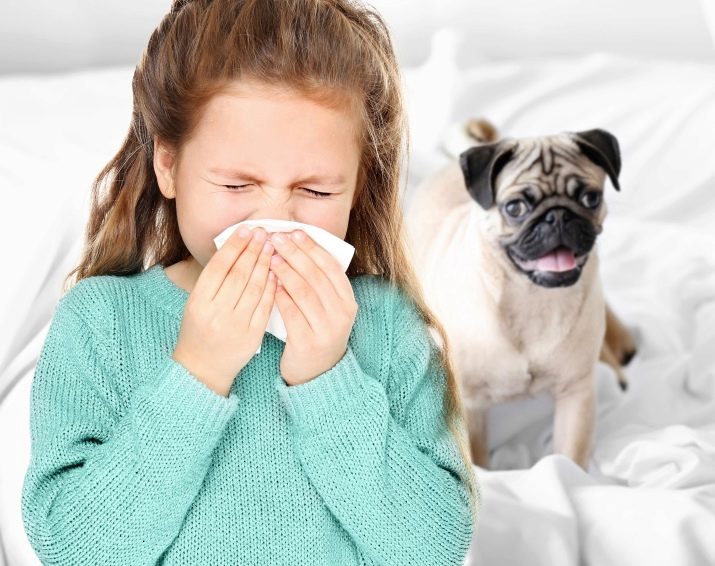
Moreover, sometimes one dog causes painful manifestations, and contact with another passes without a trace. Important: only healthy individuals can be compared for allergenicity. The presence of the slightest ailments, especially dermatological, radically changes the picture. But there are several points that distinguish animals with minimal allergic properties.
The critical value is:
wool length;
the size of the animal itself;
salivary secretion rate;
character.
It is often believed that excess hair provokes allergies to a greater extent. But a smaller amount of hair or a shorter length does not mean that the danger is small.
Many shorthair pets molt every day, so allergens enter the environment continuously.The conclusion is simple - the intensity of molting is also of considerable importance.

Allergen-free breeds for the most part are modest or medium in size. The larger the individual, the more active the release of allergens. But it is important to take into account another nuance - pathological reactions also depend on what substance provokes them. A very serious danger is dog saliva. It can cause severe irritation of the skin.
Therefore, anyone suffering from an allergy to anything, or even just having allergic relatives, should refuse to buy dogs, saliva often dripping from their mouths.
But it’s important not only its total amount. Too frequent barking means that droplets of saliva constantly fly out of the mouth.
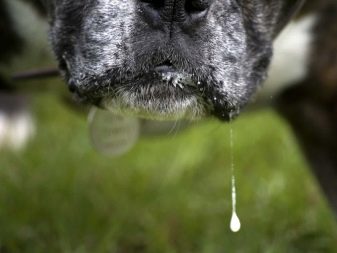
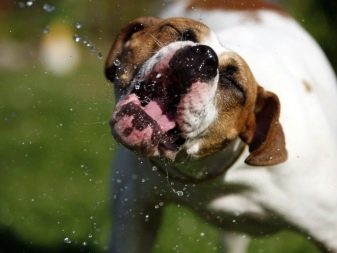
Therefore, balanced individuals are less dangerous in terms of allergies. To minimize danger, you also need to:
maintain cleanliness (by bathing);
systematically clean the house or apartment;
constantly monitor the health of the pet, treat acute and chronic ailments;
carry out disinfection (fight with worms);
vaccinate a pet;
regularly visit the veterinarian and strictly follow his instructions.
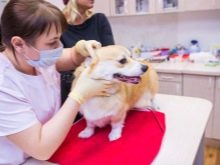

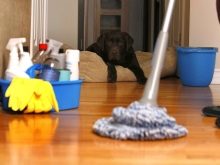
Main breeds
Among the smallest dogs on which there is no allergy (or rather, it is almost absent), we can confidently name affinpincher. Even the largest individuals in height do not exceed 0.27 m. Affenpincher can have hair of various lengths. However, in any case, it does not fade, and therefore, with reasonable precautions, the risk of contact with the allergen is minimized. Another advantage of the breed is that it does not emit a foul odor.
But not everything is so simple: affenpincher puppies are rarely sold and at a high price. To some extent, these shortcomings are offset by relatively modest maintenance costs. The breed has a very stable health and is not capricious at all. She is bathed on average 1 time in 30 days. You will also need a regular haircut.
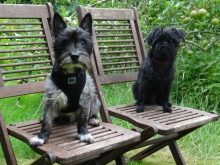
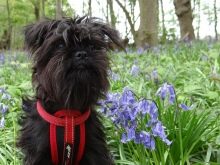
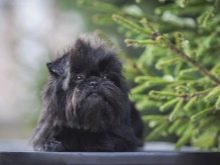
The list of hypoallergenic dogs includes the Coton de Tulear. This species of animals appeared in antiquity in Madagascar.
Its characteristic feature is a luxurious looking white "fur coat". To the touch, the fur of the tulears is more like cotton wool. Important: the breed is hypoallergenic only under favorable conditions - when the hair is carefully looked after.
Care in this case involves systematic combing and washing. It is best to combine these procedures and carry them out one by one, then the result will please.
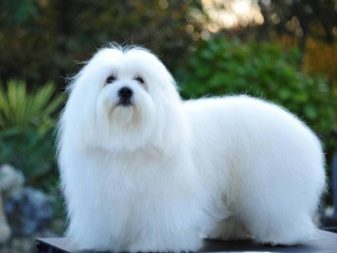
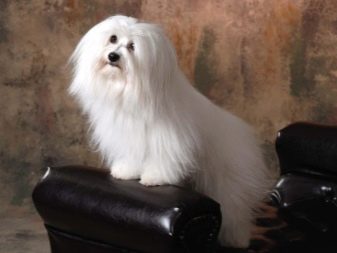
Important: after washing, the tullear should be immediately dried with a hairdryer.
Another excellent breed for allergy sufferers is Italian greyhound. Its representatives resemble greyhounds, only much smaller in size. There is nothing surprising in this, because Italian greyhound is just part of the group of greyhounds. She is distinguished by kindness and devotion to people. Importantly, from the Italian greyhounds there is no unpleasant odor characteristic of many other dogs. This breed sheds very little. To eliminate all possible dirt and excess hair, it is enough to wipe the small greyhound with a soft moistened cloth.
But it is important to understand that Italian greyhounds are considered unsuitable for children and especially active teenagers. They have too fragile bones, and any excessive force, any carelessness can lead to serious injury.
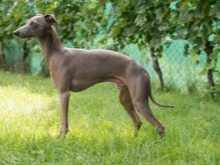
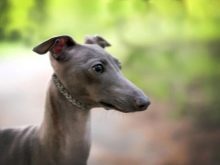
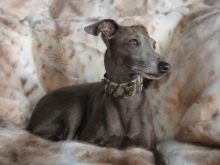
A good alternative to them can be considered Bedlington Terriers. Such a breed is not large in size, and despite this, it has excellent protective characteristics.
Thick wool should not cause suspicion - the Bedlingtons do not fade and exude a bad smell.
Hair loss is still possible, however, this only happens when combing. Therefore, it is advisable to clean up only in specially designated places, which immediately after combing must be carefully swept and washed. Ideally, the Bedlingtons are combed daily. A systematic haircut will also be required.


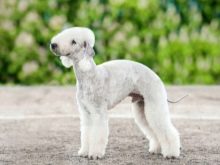
The top best hypoallergenic dogs are american hairless terriers. Their name is eloquent - the body of the animal has absolutely no hairline. Moreover, the skin of the terrier does not peel off, and he himself is not inclined to bark often. Therefore, all the most dangerous allergens practically do not clog the apartment or house.
But the same pluses turn into a serious minus - the American Terrier is subject to hypothermia.
In summer, his skin will have to be covered with dog sunscreen. The spectacle of blisters and sunburn, coupled with an awareness of the suffering of the pet, is unlikely to please the owners - no matter how allergic they are.
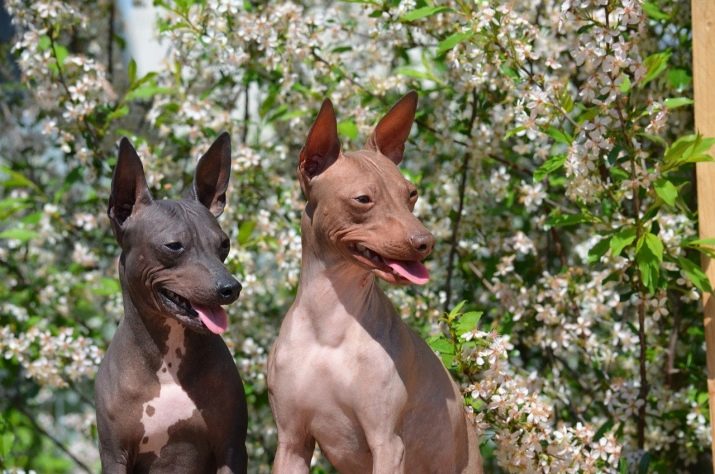
You can take a closer look and to another hypoallergenic breed of terriers - Tibetan varieties. These are medium dogs, characterized by fluffy. The strong development of the hairline is compensated by the minimum intensity of molting. The skin of the "Tibetan" is very resistant to disease, and therefore causes a minimum of problems.
But there were some difficulties here too - if the Tibetan dog is not combed out systematically, the hairs will start falling out in shreds. Then, instead of reducing the risk of allergies, they only increase it. But the animal calmly bathes, and the owners do not experience difficulties with hygiene procedures.
Important: terriers are usually combed out after wetting. This will help to eliminate unpleasant sensations in the dog, and she will be more calm about the procedure.

But if allergy sufferers are not afraid of relatively large animals, they should get acquainted with the bullet. This is the name of a shepherd dog, bred in the past spontaneously in Hungary. The hair on this animal looks like dreadlocks. It is considered suitable for both apartment maintenance and for suburban dwellings. A pleasant feature for many will be the absence of bad aromas.
An abundance of wool is a serious minus of the bullet. Therefore, care for it will have to be done as carefully as possible, strictly on schedule. Important: combing a bullet is not required. Separate hairs are separated by hands, passing from the roots to the tops. At the same time, any debris they find is immediately removed.
It is worth considering that the "Hungarians" bathe only in the summer. A dog can completely dry in about 3-4 days. On cold days, this can be a very dangerous factor.
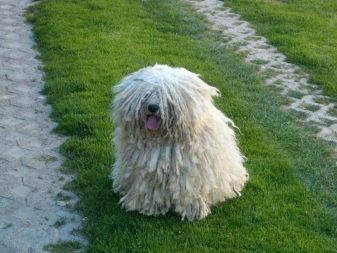
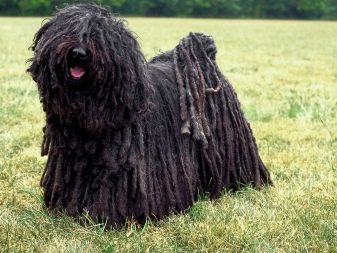
If the emotionality and friendliness of a dog comes first for allergy sufferers, they should read the description irish wheat terrier. Its hypoallergenic properties are due to the lack of molting, the absence of undercoat and silent disposition.
"Irish" still have to constantly comb. Their soft, silky coat does not crumble. You can bathe at your own discretion. The best guide for the owners will be the condition of the skin and hair.
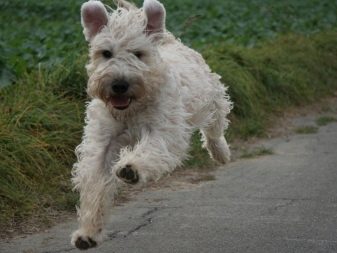
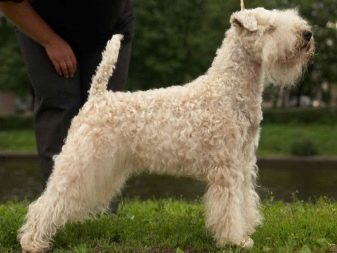
Of domestic breeds, Samoyed husky deserves attention. In the reviews of dog owners, it is mentioned only as a charming furry animal.
Also invariably mention kindness and calm. Samoyed likes molt 1 time in 6 months. Therefore, healthy pets will not spread allergens. The sudden onset of hair loss indicates a serious health problem.
But in healthy huskies, the skin does not peel off, and dandruff does not crumble. An annoying foul odor will not appear. Frequent bathing Samoyed huskies also will not be needed. The only condition for a good result is the systematic combing of wool. To do this, use special brushes.
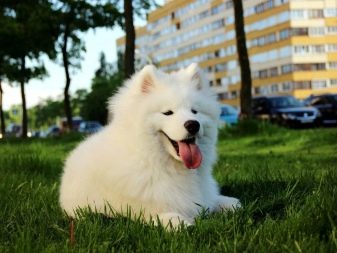
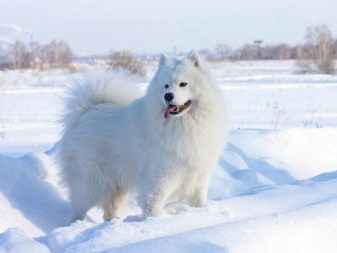
But if a Samoyed like doesn’t suit people, they should take a closer look at flanders bouvier.
This breed is distinguished by devotion and loyalty. She has completely excluded molting, which will definitely please allergy sufferers.
Bouvier is also valued for another reason - its coat does not look like other dogs. True, and care for her should be much more thorough.
Attention: the Flanders Bouvier is recommended more likely for professional breeders and experienced dog breeders. Appeal to specialists for trimming services is not necessary, but highly desirable.Despite the large size of the animals, they may well be kept even in a city apartment.
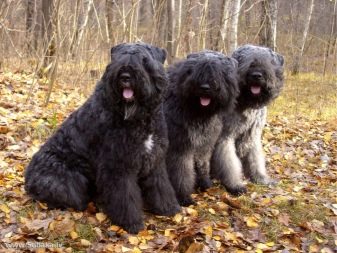
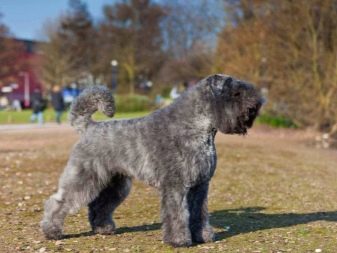
As for those allergy sufferers who would like to lead an active lifestyle, they are recommended to start Giant Schnauzers. Having acquired such a dog, you will not have to constantly remove lumps and shreds of wool from the floor.
The coat itself is long and has a wavy structure. The undercoat is quite dense. Once every 4-6 months (depending on the situation), a large schnauzer must be trimmed.
Important: frequent washing is completely impractical. But at the same time, after each meal, beard and mustache should be washed.
What is much worse, schnauzers are hypoallergenic breed only conditionally. They bark too often (these are the instincts of this breed), so the spread of allergens will be very active.
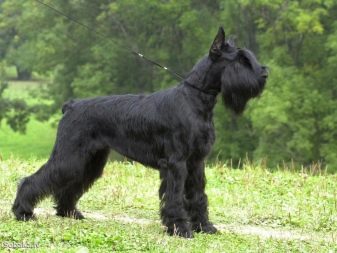
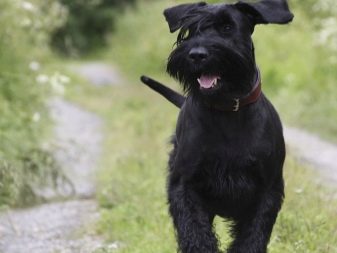
If you want to get a really hypoallergenic large dog, a good candidate will be portuguese water - she is valued for her courage and outward appeal. This breed is considered suitable for a large family due to its livability; however, she also performs guard tasks very well.
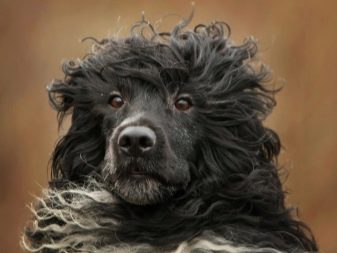
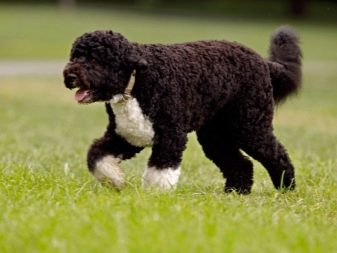
How to choose?
Puppies of almost any breed look very funny and you can watch their fun games for hours. But photography, video, or even an exhibition is one thing, and everyday worries are quite another. Therefore, for people suffering from allergies, the right choice of a pet plays an important role. This requirement is especially relevant for asthmatics, including children. Minors really need a faithful friend who would dilute the painful sensations of their illness.
One of the suitable options is considered a border terrier. Its main positive qualities are a friendly attitude and constant attention to a person.
Such a pet gets along with kids and adolescents to the same extent. He is balanced and does not show any aggression towards people.
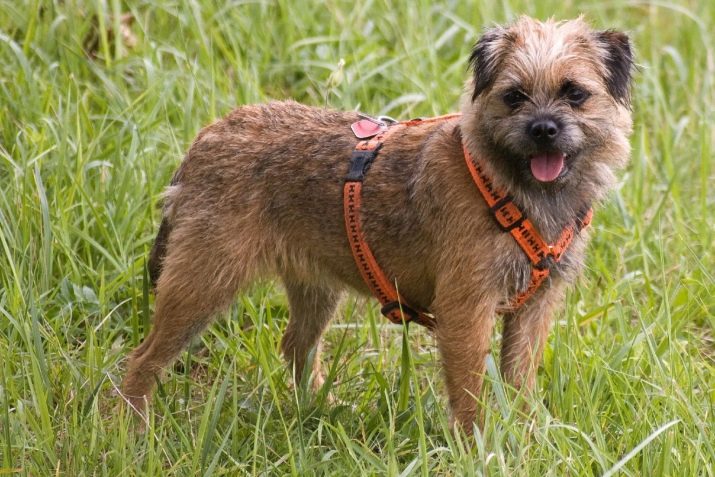
At the same time, Border Terriers love to participate in active games.
Importantly, a haircut is not required - the dog is only combed 2-3 times a week. Border Terrier does not molt.
Another breed suitable for children with severe allergies is the Irish Water Spaniel. It is favorably distinguished from many other varieties of dogs by increased activity and friendliness. Somehow, these conflicting characteristics are combined in one individual.

The "Irishman" does not spill wool on the floor. Not inclined to molt and the dog Shih Tzu.
Because of this property, and also because of the ease of care and the overall small size, the animal is great for an apartment.
Shih Tzu is covered with a silky coat, reaching a fairly large length. To remove obsolete hairs, the dog just needs to comb out.
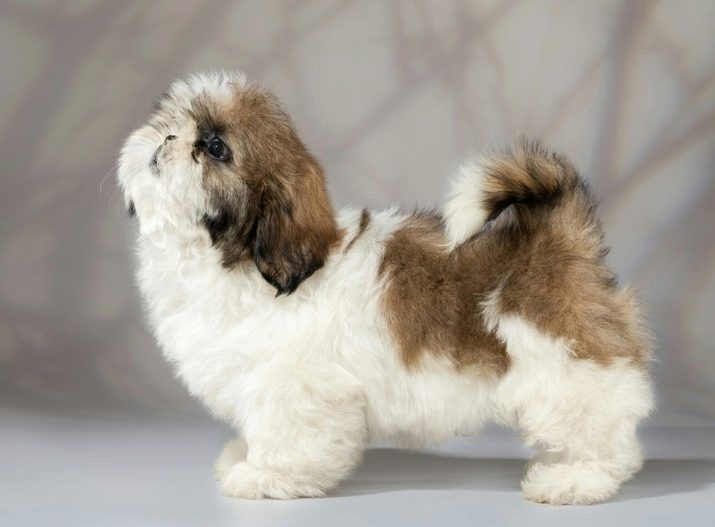
In the end, you should understand how a person suffering from allergies needs to choose a specific dog. All of the breeds listed above are pretty good, but it is not wise to be limited to general descriptions. It is advisable to first check what exactly is the nature of the pathological reaction. If the root cause of the allergy is contact with the dog’s coat, long-haired but slightly shedding breeds will be no worse than hairless varieties.
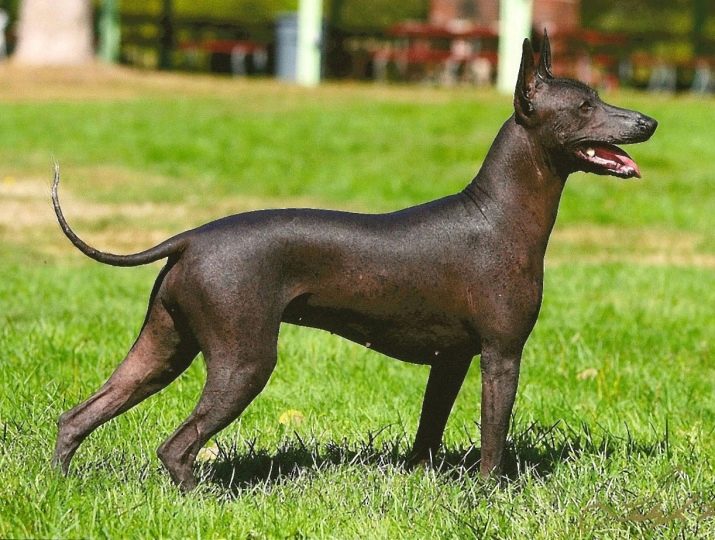
If the pathology is due to a reaction to saliva, you need to pay attention to the calm of animals.
Sometimes people are affected by ticks and dog dandruff. In this situation, pets are the best choice:
small size;
with a hard coat;
devoid of undercoat.
Other things being equal, the saliva of four-legged friends is the most dangerous. Therefore, people with particularly intense allergies, as well as those who suffer from its various species, need to choose the most calm animals.
Important: since allergic disorders usually progress and rarely heal completely, you need to be wary of "joining" new allergens.

Therefore, the most correct way would be to choose the safest dog by all criteria. If there is the slightest doubt, it is better to consult with specialists.
But there is one more nuance - even for allergy sufferers it is advisable to choose a pet not only for medical characteristics. Other properties of animals are also very significant. For example, representatives of different breeds require a different degree of attention. It is enough for someone to just pay attention, and other dogs need frequent physical contacts with the owner. If you do not pay enough attention, the animal will begin to hurt, and this, as is already known, increases the risk of allergies.
Therefore, you need to thoroughly think about whether it will be possible to provide complete care for the dog or not. Sometimes, because of the appearance of a tailed friend in the house, you have to change the mode of the day and even the lifestyle. Not everyone can afford such a luxury.
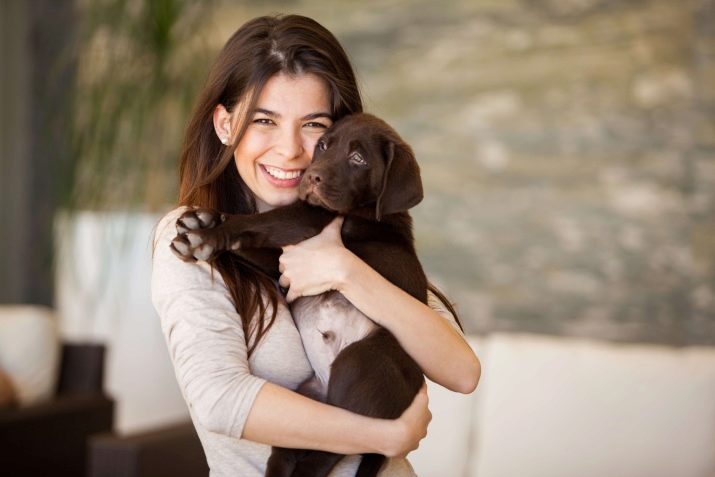
Important: you should decide whether to buy a puppy or an adult dog. In the first case, it will be emotionally more pleasant, and affection will develop deeper.
It is often said that little puppies cause a lot of problems - and it really is. But buying an adult hypoallergenic dog will not be a universal solution. It is not known exactly how the animal was raised and trained, and indeed whether it was trained at all. Not to mention the fact that the change of owner by any dogs is perceived very painfully. Having dealt with this point, you need to move to the next position - the goal for which the dog is primarily intended.
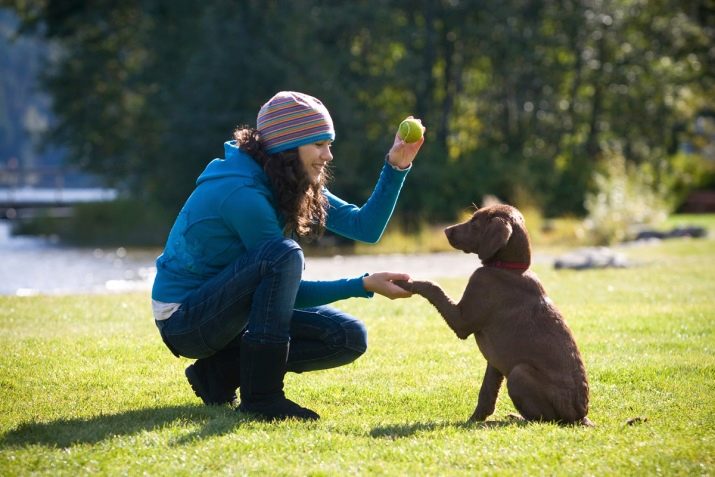
There are 3 main options:
faithful companion and companion;
guard on the road and the watchman of the house;
purely decorative animal to decorate his life.
It is required to pay attention to the size of the four-legged friend. In a small apartment or a modest private house, getting a large dog does not make sense. But even if “all is clear” with all these points, one should not rush. You need to pause at least a few days and then think it over again. This is the only way to make the right decision.
About hypoallergenic dog breeds, see below.
